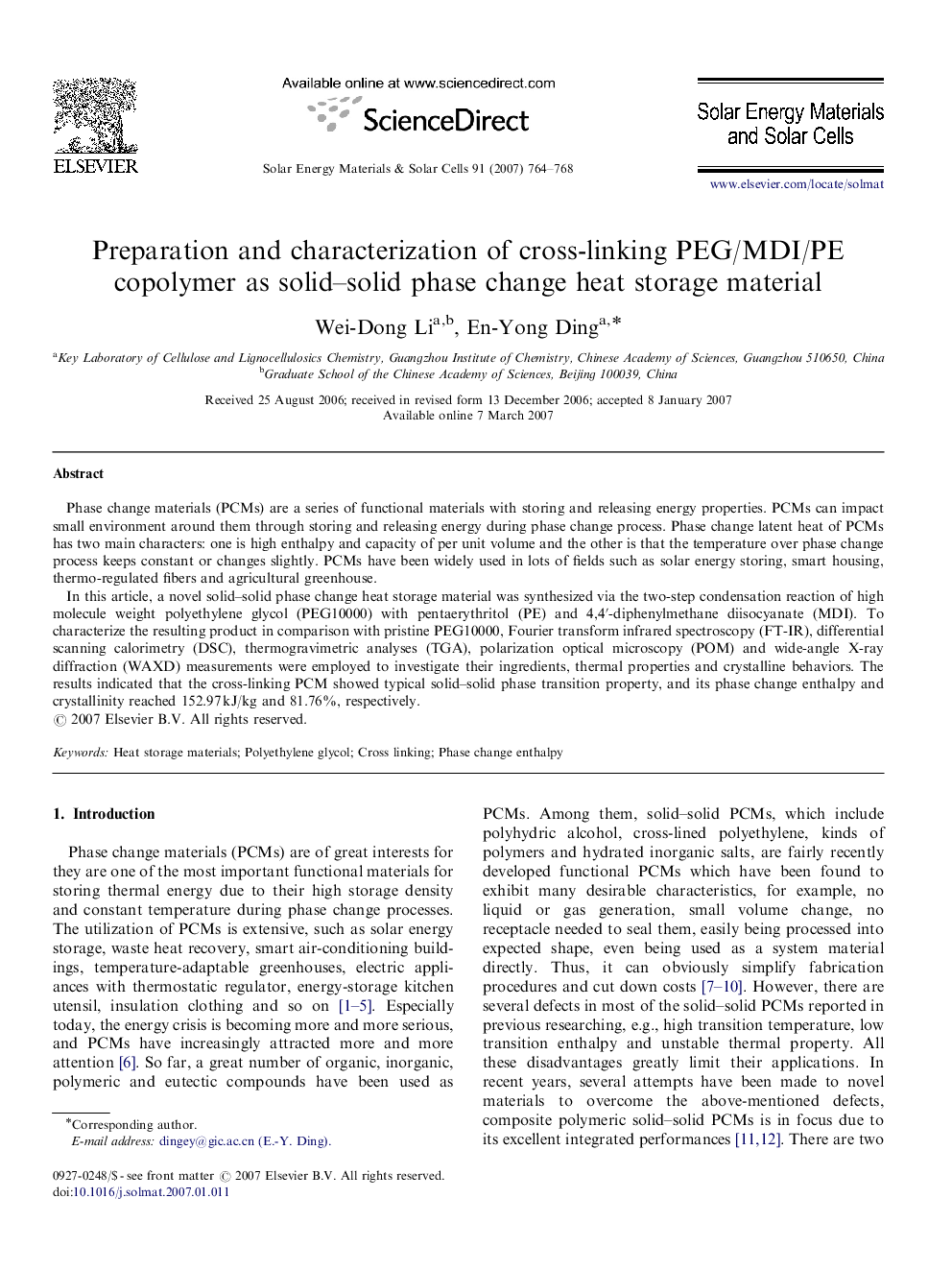| Article ID | Journal | Published Year | Pages | File Type |
|---|---|---|---|---|
| 81153 | Solar Energy Materials and Solar Cells | 2007 | 5 Pages |
Phase change materials (PCMs) are a series of functional materials with storing and releasing energy properties. PCMs can impact small environment around them through storing and releasing energy during phase change process. Phase change latent heat of PCMs has two main characters: one is high enthalpy and capacity of per unit volume and the other is that the temperature over phase change process keeps constant or changes slightly. PCMs have been widely used in lots of fields such as solar energy storing, smart housing, thermo-regulated fibers and agricultural greenhouse.In this article, a novel solid–solid phase change heat storage material was synthesized via the two-step condensation reaction of high molecule weight polyethylene glycol (PEG10000) with pentaerythritol (PE) and 4,4′-diphenylmethane diisocyanate (MDI). To characterize the resulting product in comparison with pristine PEG10000, Fourier transform infrared spectroscopy (FT-IR), differential scanning calorimetry (DSC), thermogravimetric analyses (TGA), polarization optical microscopy (POM) and wide-angle X-ray diffraction (WAXD) measurements were employed to investigate their ingredients, thermal properties and crystalline behaviors. The results indicated that the cross-linking PCM showed typical solid–solid phase transition property, and its phase change enthalpy and crystallinity reached 152.97 kJ/kg and 81.76%, respectively.
